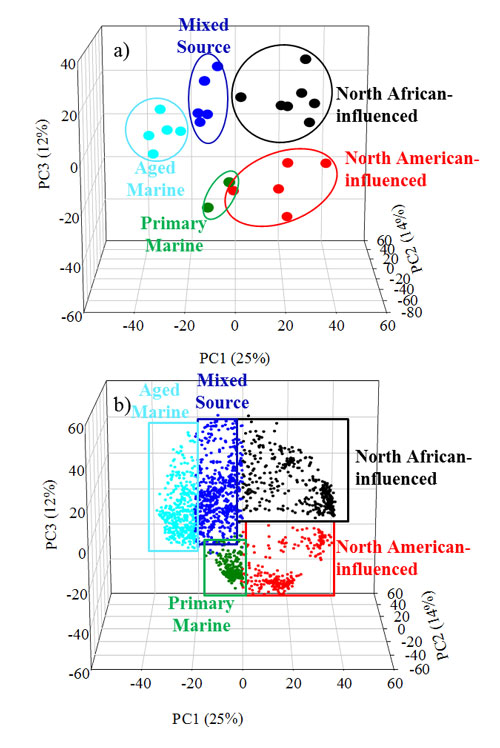The sources of the water soluble organic matter contained in the aerosols over the Atlantic ocean decoded
Organic matter is an important component of aerosols, which can absorb (or scatter) light, contributing a warming (or cooling) effect to the atmospheric radiative budget. However, this impact is tightly linked to the molecular characteristics of aerosol organic matter. It is, therefore, of prime importance to establish the organic matter molecular details of aerosols from different sources.
This characterization is the aim of Wozniak et al. paper (2014, see reference below). Based on aerosols samples collected in the framework of the North Atlantic US GEOTRACES GA03 cruise, the authors analyzed their water soluble organic matter (WSOM) molecular characteristics using an ultrahigh-resolution analytical method*. Multivariate statistics allowed the identification of five sources with very different distinguishing WSOM characteristics, enlightening the origin of these different aerosol components.
*electrospray ionization Fourier transform ion cyclotron resonance mass spectrometry.

Figure. Three dimensional plots showing the principal component analysis a) scores for samples from the five aerosol emission sources and the b) molecular formula loadings that distinguish each source from the others. Click here to view the image larger.
Reference:
Wozniak, A. S., Willoughby, A. S., Gurganus, S. C., & Hatcher, P. G. (2014). Distinguishing molecular characteristics of aerosol water soluble organic matter from the 2011 trans-North Atlantic US GEOTRACES cruise. Atmospheric Chemistry and Physics, 14(16), 8419–8434. doi: 10.5194/acp-14-8419-2014 Click here to access the paper.
